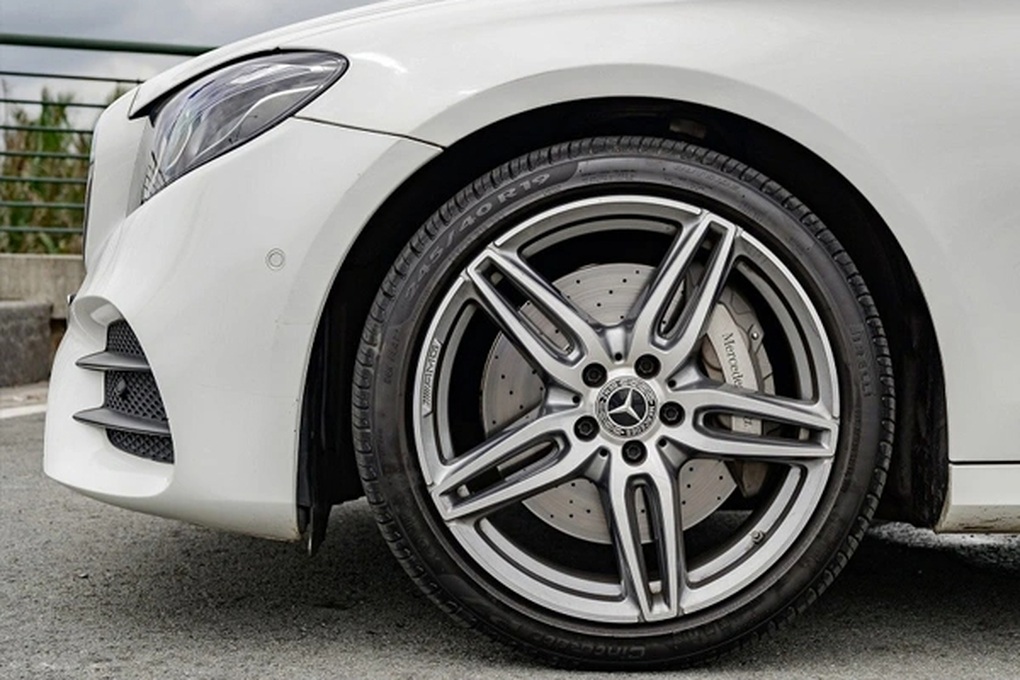Tires are such a familiar part that few people ask the question: Why are they always black? Especially when the nature of natural rubber - the main material used to make tires - is white.
From White to Black: The Story of Carbon
According to tire manufacturer Bridgestone, tires used to be white. However, to increase durability and performance, manufacturers added a special additive to the rubber: carbon black.

Tires are such a familiar part that few people ask the question: Why are they always black? (Photo: Getty).
Carbon black is a nearly pure form of carbon (about 97%), produced through the incomplete combustion of petroleum products under controlled conditions. In the form of a fine black powder or granules, carbon black is a familiar ingredient in the production of plastics, printing inks and especially tires.
The world produces about 8.1 million tons of carbon black each year, according to the International Carbon Black Association. And nearly all tires today use this material.
However, with the advancement of technology and the demand for higher performance, alternative materials such as silica are being researched and used in some premium tires.
Silica helps reduce rolling resistance, improving fuel efficiency and wet grip. However, tires using silica are often more expensive and the manufacturing process is more complicated.
In 1910, the Goodrich company began adding carbon black to tires, increasing their durability and abrasion resistance. By 1919, most tire manufacturers had switched to carbon black, giving tires their current black color.
During the 1920s and 1930s, white tires remained popular for aesthetic reasons, especially on luxury cars. However, white tires required more maintenance and were not as durable as black tires, leading to a decline in their popularity.
Behind the black is material technology

Tires used to be white (Photo: Getty).
The addition of carbon black is not simply an aesthetic choice. It plays an important role in:
- Increased durability and abrasion resistance: Carbon black helps tires withstand friction and high temperatures from the road surface, thereby increasing product life.
- Anti-UV and ozone: These elements can destroy the molecular structure of rubber. Carbon black acts as a protective shield, keeping the tire from premature aging.
- Electrical conductivity: Carbon black makes the tire more conductive, reducing the build-up of static charges - which can cause electric shock under certain conditions.
- Stays clean longer: On a black background, dirt is less visible, helping the car look neat even when moving frequently.
According to Goodyear Motors, tires without carbon black rarely last more than 8,000 km (5,000 miles), meaning you may need to replace your tires at least once or twice a year. Meanwhile, tires containing carbon black can last many times longer.
Today’s tires are the result of centuries of innovation. Road & Track magazine once noted that the first “tires” were not even made of rubber but of… wood covered with iron, suitable for horse-drawn carriages but unable to keep up with the speed of motor vehicles.
It wasn't until 1888, when John Boyd Dunlop invented the pneumatic tire - an air-filled rubber tube wrapped around the outside of a wheel - that the tire industry officially entered a new era.
And since then, the advent of carbon black has helped complete the wheel's rotation - both literally and figuratively.
Source: https://dantri.com.vn/khoa-hoc/tai-sao-lop-xe-mau-den-trong-khi-cao-su-tu-nhien-mau-trang-20250523080014199.htm


































































































Comment (0)